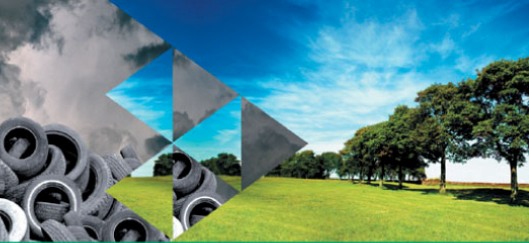Alternative fuel and raw materials

The cement making process is energy and material intensive. Traditionally, fossil fuels and natural raw materials have been used to make clinker, the main ingredient in cement. To operate its business in a more environmentally, economically and socially beneficial way, Holcim is increasingly using non-traditional or “Alternative Fuels and Raw Materials” (AFR) for clinker production. AFR allows for the recovery of both energy and material from selected wastes thus conserving non-renewable natural resources.
8 wrong perceptions about alternative fuel resources:
1. To dump the waste is better than to burn them in the cement plant kiln. The facts show that this conception is not true. The waste decomposes, absorbs to the soil and mixes to the ground waters. Consequently, the contaminated area does not fit in any case; there is a real danger of water sources pollution intended to be used in daily life. Decomposition process is straight associated with releasing of greenhouse gas calls methane into the atmosphere. This gas keeps the heat 20 times stronger than greenhouse gas and strengthens directly the greenhouse effect.
2. The usage of waste as alternative fuel turns the cement plant to the waste incineration plant. The main purpose of waste incineration plant (garbage incineration plant) is the utilization of the waste by incineration method (low level in waste management system). Material production (e.g. to produce cement) using waste to energy is not included to the aim of this plant. Some garbage incineration plants produce energy, but their energy efficiency is much lower than cement plant. Remaining ash after incineration must be utilized.
3. Toxic substances release into atmosphere while waste burning in the cement plant kilns that pollute the environment and may be threat to public health. Gas forms in any combustion process. If combustion happens in the uncontrolled condition (e.g. forest fire), at that time there is serious risk of harmful substances spreading into the air. However, combustion process in the plant kiln is carried out under strict control conditions; spreading large number of detrimental substances into the atmosphere is prevented.
4. There are no special equipments use for analysis and control of gas content in the air in some production fields. On the contrary, we accomplish continuous emission monitoring in the air using the highest quality devices. These equipments include automatic flue analyzer of gases and kilns, clinker cooler, raw, coal and cement mills. The most modern monitoring system in the country is in line with Holcim world standards. Reports are automatically formed and defended from forging.
5. Suffocating fume smell spreads around when waste burns. Feeling of specific smell of solid fuel waste around 100 meters distance where they are kept (i.e., the territory of the plant), is considered normal and safe for human beings. There is no significant difference in the content of emission during coal burning and waste involved in coal burning. Therefore, demand on improving of the smell in the second case is baseless.
6. Incineration of waste causes acid rains that damage farmers production near the plant seriously. The companies, which use fossil fuel in the production, mainly bear the responsibility for acid rains (e.g. coal, however, it contains a great deal of sulfur content). The sulfur indicator is higher in the manufacture of raw material (limestone and marl) in some regions. The amount of sulfur in the waste composition is much less than coal and raw material.
7. While waste burning in the kiln, harmful dioxides and furans get radiation that causes serious diseases among people. On the contrary, high temperature, also remaining of fuel mixture in such temperature under the control causes the destruction of the detrimental dioxides and furans. They arise only uncontrolled and limited combustion processes. Material temperature in the kiln is more than 1450C, fire temperature is more than 1800 C. Fuel mixture stays at more than 1200 C for 12-15 seconds, at 1800 C for 5-6 seconds. The density of dioxides and furans sometimes are lower than quota.
8. Waste goes into the kiln directly, its exact composition is not analyzed. The view and contents of waste are clear that we work with them. Classifying of solid fuel is fulfilled by the supplier company that gives the material. It separates paper, textiles, plastics, etc. untreated wastes. Specially, they are used together with traditional types of fuel. Bone meal is imported to the treatment where all hazardous microorganisms are destroyed. Heavy metals, sulfur, chlorine, ash and moisture of the material are checked in the specialized laboratory while waste being received.






